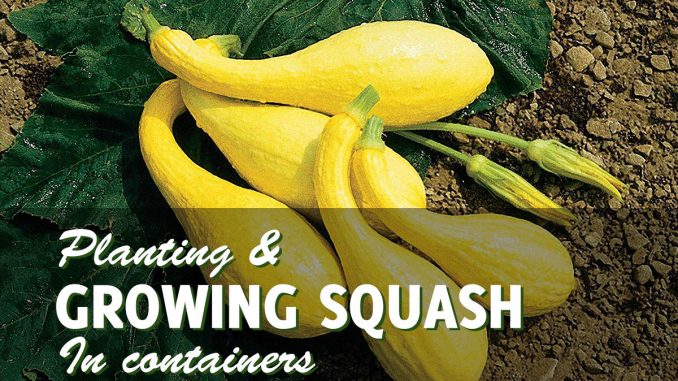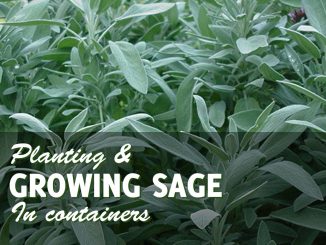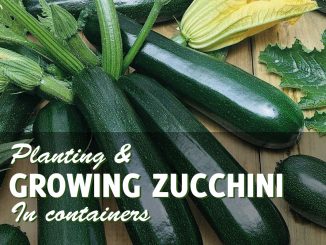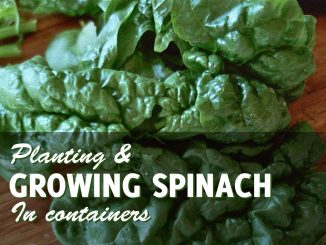
Growing squash in containers is one of the easiest ways to put more vegetables on your table. There are two main types of squash that you can grow in your garden: the winter squash and summer squash. Both varieties have different subtypes that will make an excellent addition to your garden.
Each type of squash has different shapes and sizes. Some are straight, have slender necks, or rounded. Every kind of squash grows in different ways. There are squash that are vine-growers, thereby needing a trellis to climb to. Others are bush type vegetables and will only require a bit of space to grow.
For growing squash in containers, you might want to consider these types of squash for your garden: Bush Crookneck, Black Magic Zucchini, Bush Table Queen, Butter Bush, and Hybrid Jackpot Zucchini.
Things to Consider Before Growing Squash in Containers
Squash likes an area that is sunny and well ventilated. It likes warm conditions as well, so it’s best to begin your cultivation around July, preferably indoors at the beginning. Planting in July will give you a harvest around September.
Start your cultivation indoors 4-3 weeks before you plan to transfer them outdoors when growing squash in containers. Be sure to give your plants time to acclimatize before permanently moving them out to your garden.
Picking the Right Container to Grow Squash
Choose a pot that is around 12 inches in diameter and 12 inches deep. For growing squash in containers, you can go for 24 inches as maximum depth. This will give the plant enough room for developing roots. You can choose between a terracotta pot and a plastic container.
Some prefer a plastic container because they hold moisture well during warm weather and does not easily break compared to clay pots. Drill holes at the bottom so it would drain out excess water to prevent your crops from getting waterlogged. You can line the bottom with small pebbles or broken clay pots to help prevent soil from getting eroded during watering. Or use a layer of fiberglass screen at the bottom, this not only prevents soil erosion when growing squash in pots but also prevents pests from getting inside.
Preparing Your Potting Mix for Growing Squash in Containers
For growing squash in pots, you will need loose, loam soil as your potting medium. You can do your own potting mixture by mixing loam soil, sphagnum peat moss (to hold moisture), as well as perlite. Never use garden soil as it may contain weeds, fungus, and other pests that can damage your crops.
You can use fertilizers to help give your potting mix a boost. Use slow-release fertilizers such as 10-10-10 or 14-14-14 or according to package instructions. However, it is better to use compost for it has more benefits and also safer compared to commercial fertilizers. They make crops taste better while growing squash in containers and also contain fewer chemicals that can harm you and the environment. What’s more, it is cheaper and can be made in your own back yard.
A decent composting bin or composting tumbler will do just the thing for you. A ratio of 1:3 of compost and potting medium will be an ideal start. Fill the pot nearly up to the brim of your potting mixture and lightly pack it.
Check the variety of squash you intend to grow. Vine growers need to have a trellis or a wigwam/Maypole for support. Put your container tear a trellis or place a wigwam right inside the container after placing it in your soil.
Squash Seeds
Place 4 to 5 seeds at the center of the pot and cover them with ½ inch compost. Lightly water them and keep the soil moist but not wet while maintaining a temperature of 70 degrees. Germination happens typically around 7-10 days when growing squash in pots.
Thin your crops by cutting them off once the sprouts have formed two true leaves; cutting is essential because pulling out the seedlings will disturb the soil and also destroys the root system of other plants. Leave two seedlings behind and let them grow up to 10 inches, then cut off the weaker plant and let the other grow, leaving you with one plant per container.
Care of Your Squash Grown in Containers
Watering
Make sure to keep the soil of your crops moist by watering them daily. Do not water your crops if the soil is still damp as it is easier to waterlog plants when growing squash in containers. If you are growing a squash variety that produces vines, help the vines stick to the trellis by winding them around it once they are 2 inches long.
Fertllizing
Give them a regular dose of slow-release fertilizers or side-dress your crops regularly with mature compost. Giving them compost tea every two weeks is also ideal for producing a healthier plant.
Pests & Disease
Keep an eye out for pests and diseases by inspecting your crops daily. Aphids can be a problem for squash, causing yellow and wilted leaves. You can prevent an infestation from happening by blasting your plants with a hose once you see signs of aphids in your crops. You can treat your crops with a weak solution of insecticidal soap to get rid of them. Spraying them with compost tea will be better as it does not contain harmful chemicals and has thousands of beneficial bacteria that will keep your crops naturally healthy and stable.
Squash bugs can easily decimate an entire plant in a short period of time. Check out my article on neem oil for squash bugs for an easy way of dealing with these evil bugs.
When you water your crops, make sure you leave the leaves dry (unless there is the presence of aphids in them) to prevent fungal, bacterial, or viral growth. Blotched leaves are an indication of infection and can be remedied with the use of a diluted copper spray. Spraying your crops with compost tea or neem oil is an even better and organic way to treat and prevent this problem.
Harvest Time
Flowers will start to appear 40-50 days after germination. Take note; these early flowers are male. After a week, female flowers will emerge. Help your plant produce by rubbing the male and female flowers against each other.
Harvest the crops once they reach a length of 8 inches and a diameter of 2 inches. This way, you are sure that your vegetables are still sweet and tender. Looking for other healthy vegetables that grow awesome in containers? Have a look at our guide to growing spinach in containers!




Be the first to comment